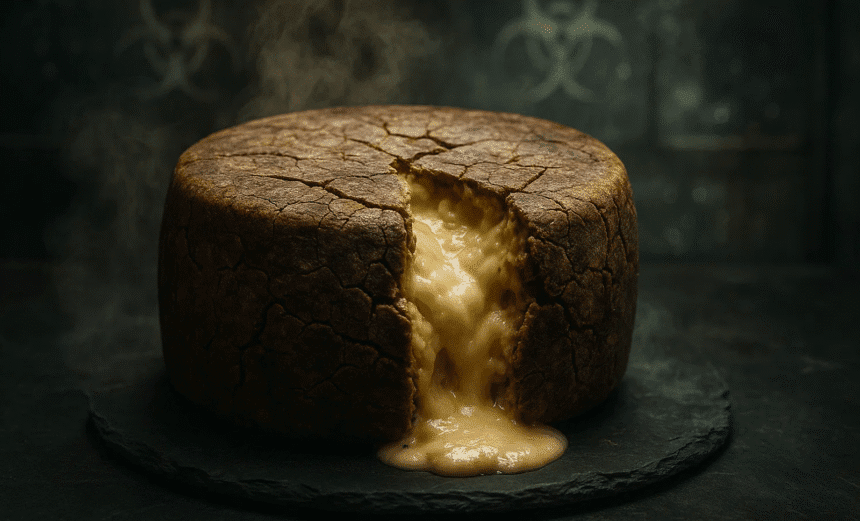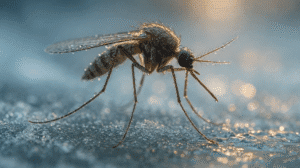Long considered the world’s most dangerous cheese, Casu Marzu continues to fascinate, terrify, and attract global attention as a centuries-old Sardinian delicacy that pushes the boundaries between culinary tradition and biological risk. Originating in the remote pastoral communities of Sardinia, the cheese dates back several hundred years and evolved out of necessity when shepherds lacked refrigeration and relied on natural fermentation to preserve food.
Over time, they discovered that leaving Pecorino Sardo, the region’s iconic sheep-milk cheese, partially exposed allowed the Piophila casei or “cheese fly” to lay eggs. When the larvae hatched and began feeding on the cheese, they broke down its fats, producing an extremely soft, almost liquid interior prized by locals for its intense aroma and sharp flavor. What began as an accidental fermentation process eventually became a cultural tradition, passed down through generations as a symbol of Sardinian identity, resilience, and rural heritage.
Casu Marzu gets its notoriety from the very element that defines it: live larvae. These tiny maggots can jump up to several centimeters when disturbed and are traditionally consumed alive, as Sardinians believe the cheese is unsafe once the larvae die. This unusual consumption practice, however, carries risks documented by food-safety experts. The larvae can survive stomach acidity, potentially causing enteric myiasis, an intestinal infestation, along with allergic reactions or eye irritation.
Because of these dangers, the European Union banned the commercial sale of Casu Marzu under health and hygiene regulations. Despite the ban, production continues quietly across Sardinia, especially in rural homes during celebrations and family gatherings. Many Sardinians view the cheese not merely as food but as part of their cultural heritage, resisting external regulation and defending Casu Marzu as “real tradition, not a threat.”
The production process remains largely unchanged. Cheesemakers first produce Pecorino Sardo and allow it to age. When the rind becomes firm, they cut it open slightly and leave the wheel uncovered in specific environments where cheese flies can access it. The flies lay hundreds of eggs, which hatch into larvae that burrow through the cheese over the next two to three months. Their digestive activity breaks down the fats, producing a creamy, strong-smelling paste known locally as la lagrima (“the tear”). When the cheese reaches peak softness, it is eaten directly from the wheel, usually with traditional Sardinian flatbread and local wine. Farmers insist that the flavor, texture, and experience of Casu Marzu cannot be replicated artificially, emphasizing that this is a natural, if extreme, form of fermentation.
The cheese’s controversial reputation grew worldwide after it was labeled “the most dangerous cheese” by Guinness World Records in 2009. Yet this notoriety has boosted Sardinia’s tourism, with adventurous travelers seeking out the forbidden delicacy despite its illegal status. As a result, Casu Marzu now occupies a strange space between cultural icon and underground culinary challenge. On the informal market, its price varies widely from €50 to €300 per kilogram depending on availability, season, and whether sellers cater to locals or curious tourists. Food anthropologists argue that banning such traditional foods risks erasing unique cultural practices, while public-health authorities stress that biological safety cannot be ignored. This tension between identity and regulation keeps Casu Marzu at the center of international debate.
For Sardinians, however, Casu Marzu is more than a headline. It represents memory, tradition, and the stubborn survival of local customs in a globalized world that often dictates uniform standards. Whether admired, feared, or rejected, it remains one of the world’s most unusual foods, a cheese that tells the story of a people and their landscape, even as it challenges modern ideas of safety, hygiene, and culinary limits.


















